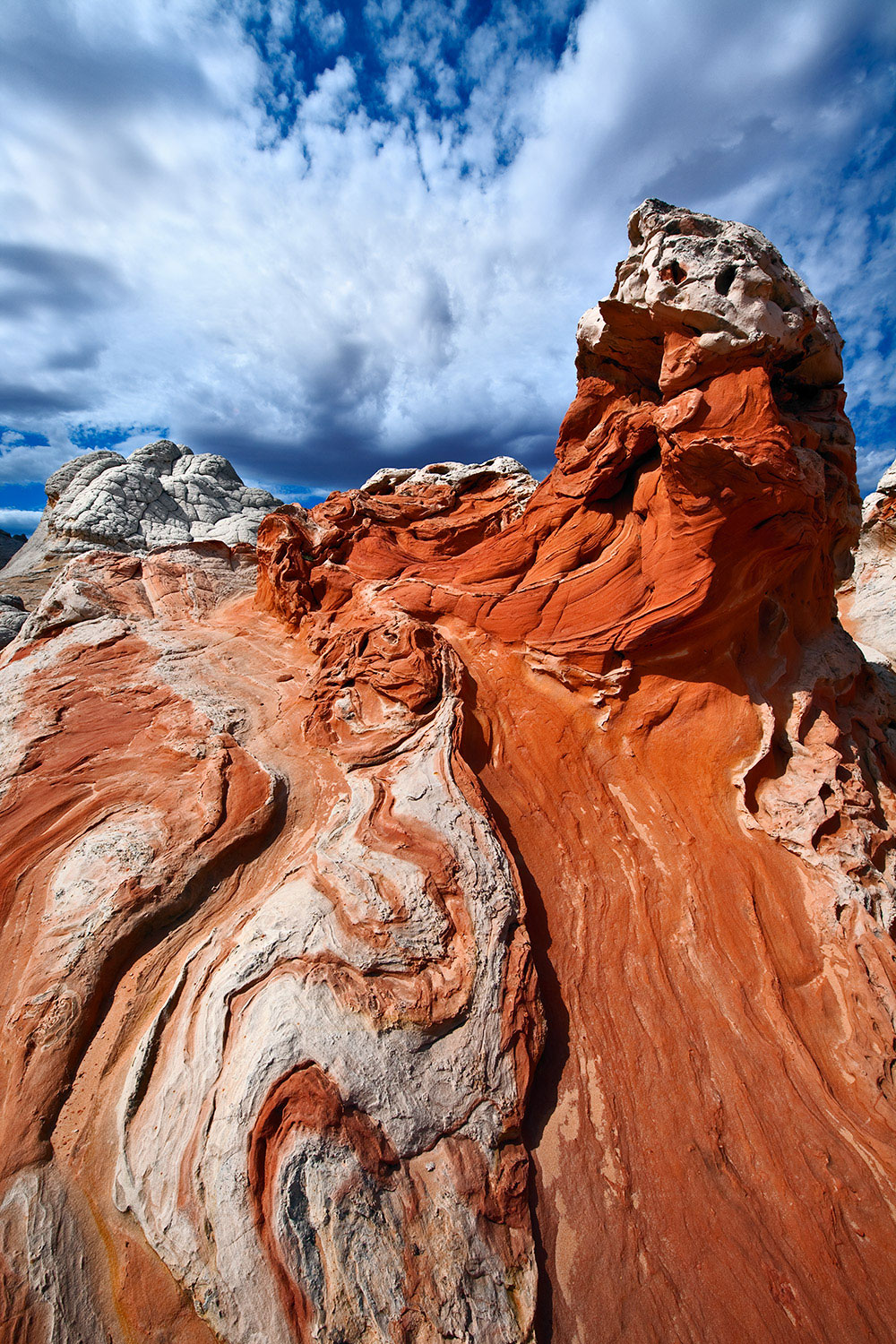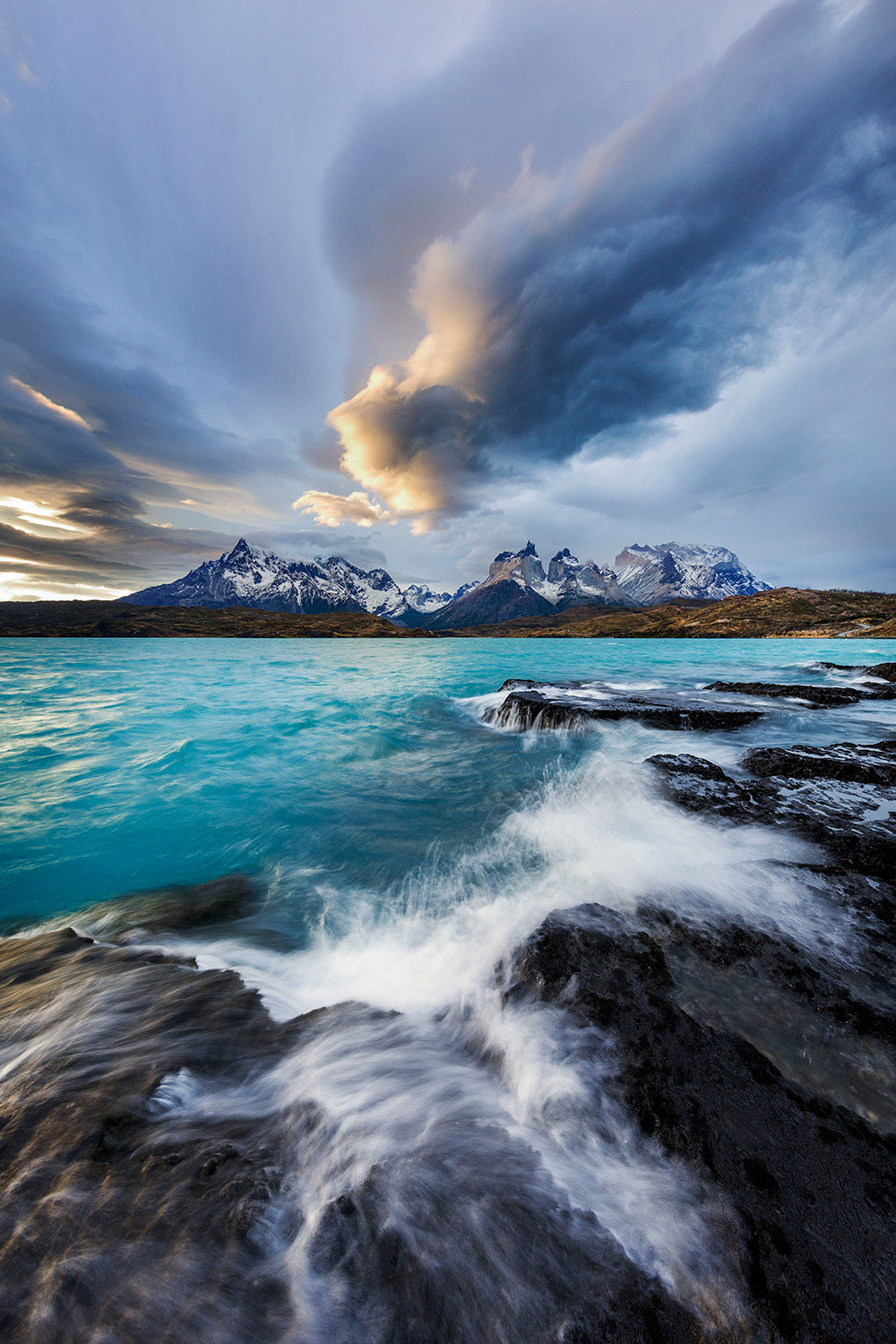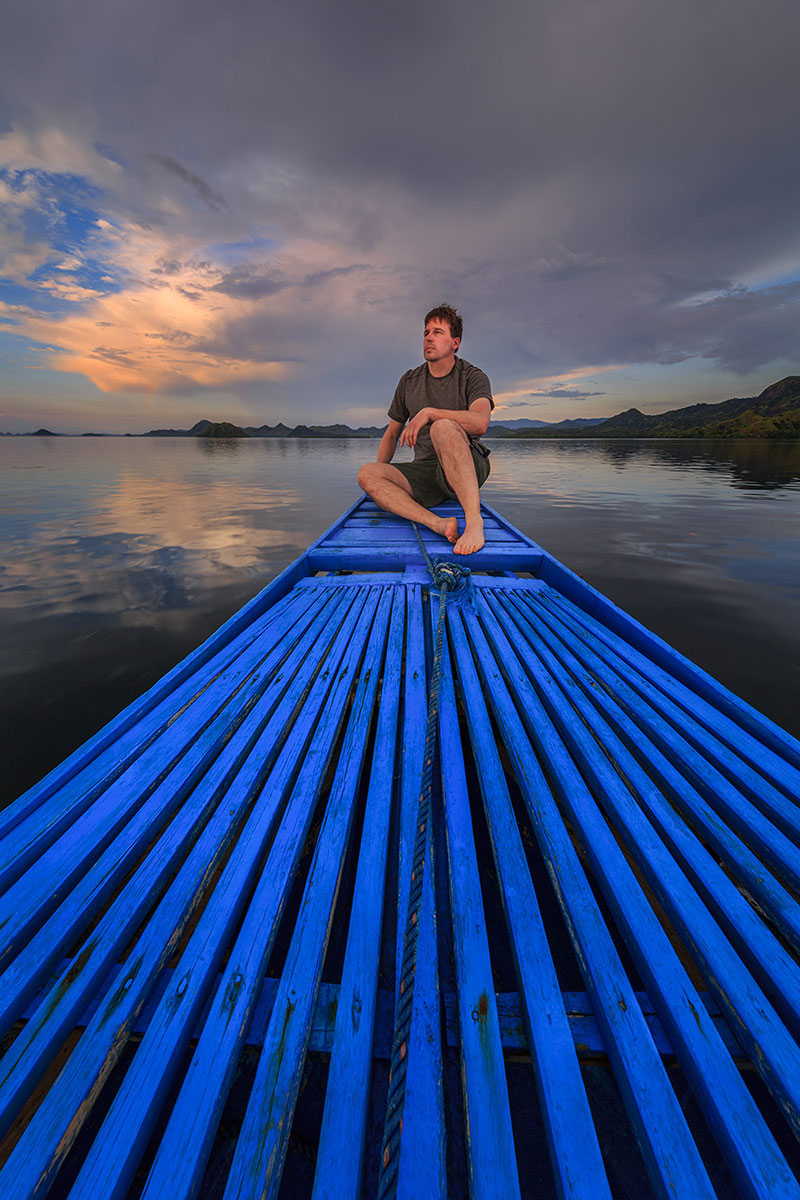Whenever you include the sky in your photos, chances are your compositions will look better if there are clouds—the right kind of clouds, that is. Photographing clouds is really important for landscape photography in particular, but I find the presence of clouds to be useful with other types of outdoor photography as well.
Look for clouds with texture.
As I said above, you want the right type of clouds. Skies with clouds that lack definition (such as uniformly overcast skies) don’t generally help much. On the other hand, clouds with gaps, texture, and definition often work really well. When clouds have sufficient separation, light can break through the gaps to produce stunning and colorful results—especially at sunrise or sunset—even when cloud cover is significant.
Related videos:
Sunset Photography Tips
Sunrise Photography Exposure
Partly to mostly cloudy skies generally give you the best chance of getting colorful sunsets. Although you want a lot of clouds in the sky to catch the color of the rising or setting sun, too many clouds will block the light. Of course, the clouds will do what they will do, so it pays to be on location when mixed cloud cover is present. All you need is a tiny gap at the horizon, right where the sun is, to set fire to an otherwise completely cloudy sky. Clouds are also key to getting really great light on the landscape: if enough clouds light up, they can act as giant reflectors, bouncing intense and colorful light onto the landscape below.
Often, the best time to get great clouds is when storms are coming in or breaking up. Storm clouds are often very large, dramatic, and photogenic, and can transform even bland midday light into something much more photogenic, such as with this storm building over sandstone formations in the desert.
Use dramatic clouds to enhance your landscape photos.
Clouds are especially great for landscape scenes. With the image below, massive storm clouds built up over the mountains in the background. The clouds created dramatic shapes, enhancing the composition. When the setting sun found a gap in the clouds near the horizon, the storm clouds started to glow with a warm, colorful light. If the sky had been empty, I probably wouldn’t have even bothered shooting.Photographing Clouds can be great for wildlife photos, too.
Although inclusion of the sky is less common with wildlife photography, I’m always looking for opportunities to use wide-angle perspectives when photographing wildlife, which means I often need to think critically about what is going on in the sky. Similar to landscape photography, clouds can really enhance wide-angle wildlife photos. For example, with this photo of a male lion lit by a spotlight at twilight, I went wide to include the dramatic storm clouds. If the sky had been uniformly overcast or devoid of clouds, I would have included very little of the sky, or excluded it altogether. Instead, the clouds add great texture and interesting color to the scene, so I went extra wide to include as much of the sky as possible. I used a spotlight to illuminate the lion, and underexposed the clouds to enhance the dramatic mood they helped create.
Clouds can create contrast and color for cityscapes as well.
In the photo below, clouds add lots of color and texture to the sky, with the blue clouds of twilight complementing the warm color from the city lights below. If I didn’t have clouds, I wouldn’t have included as much sky as I did, so the clouds allowed me to take a wider view and include more of the scene. During the long exposure, passing car lights created streaking diagonal lines radiating from the image corners into the center of the photo, enhancing visual interest and drawing the viewer deeper into the composition.
Related article: How to Use Complementary Colors in Photography
And don’t forget people portraits!
Clouds can add extra drama to wide-angle portraits of people taken outside. I made the photo below at night, using flash to light my subject while the long exposure recorded the moonlit clouds above. The clouds create an attractive pattern of radiating lines pointing to the man, adding considerable visual interest and energy to the composition. The clouds undeniably enhance the mood and overall appeal of this image; in fact, I waited several nights for the perfect clouds before taking this photo.
When clouds show up, be there!
Online weather services can help immensely when trying to predict good cloud conditions, especially if they offer hour-by-hour forecasts. Satellite maps showing cloud movement over time are even more helpful; I have a few weather apps loaded onto my smartphone so I can check cloud movement via satellite in real time. This helps me when I am trying to determine the best location for an upcoming shoot. If I can, I aim to be on location at a spot that will be near the edge of a cloud front during the magic hours. Nothing, however, beats simply being on location as much as possible when conditions look promising.
Conclusion
Clouds can really help make your outdoor photos stand out from the crowd. So when you have good clouds in the sky, make sure you are out there, waiting for the light show to begin!
To learn more about working with natural light and weather, check out my eBook Chasing the Light which contains 240 pages of lessons relating to the creative use of light and color in photography.
About the author: World-renowned professional photographer and Tamron Image Master Ian Plant is a frequent contributor to a number of leading photo magazines (including Outdoor Photographer, Popular Photography, Landscape Photography, and others). You can see more of his work at www.ianplant.com.
Have something to add to the story? Leave a comment or email editor@outdoorphotographyguide.com.








Very informative. Adding clouds in the scene gives a different perspective. Luv it. Thanks
Thanks for your information on landscaping photography and the importance of making sure that clouds are in the background. Most of my work has been with people photography, and now I a looking Nature and Landscaping. Thanks again.
Can you mention what are the weather apps you regularly use? Thanks!